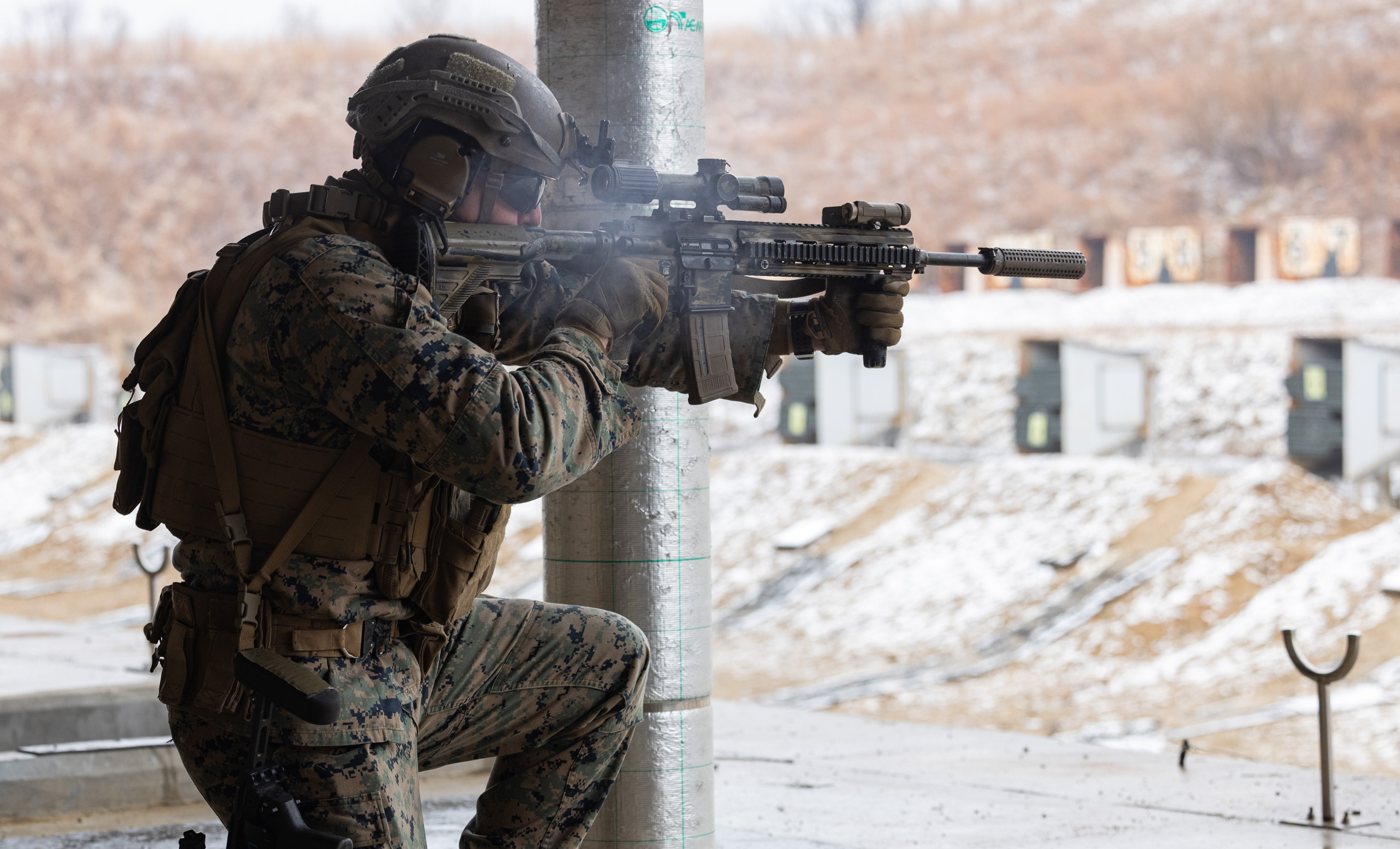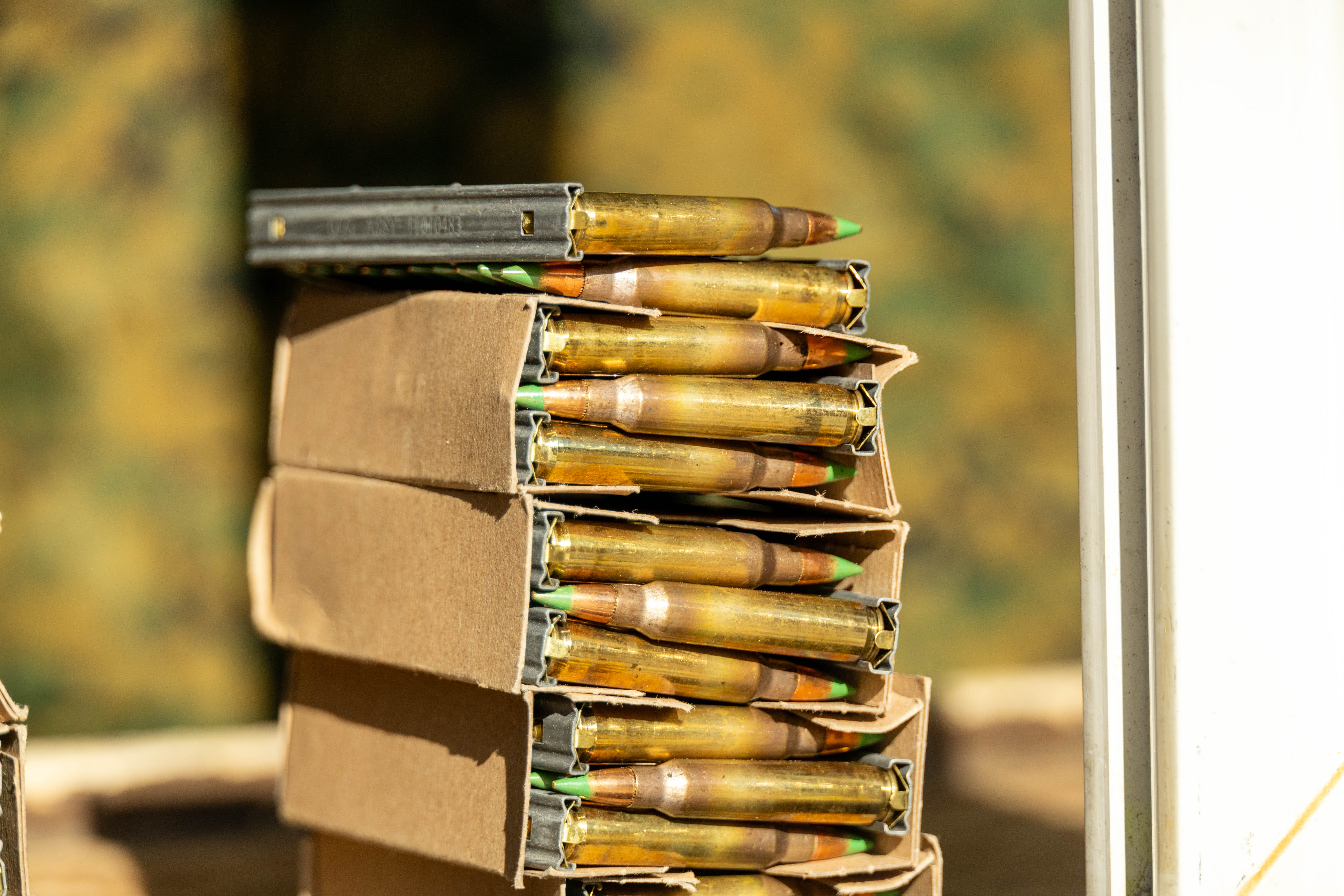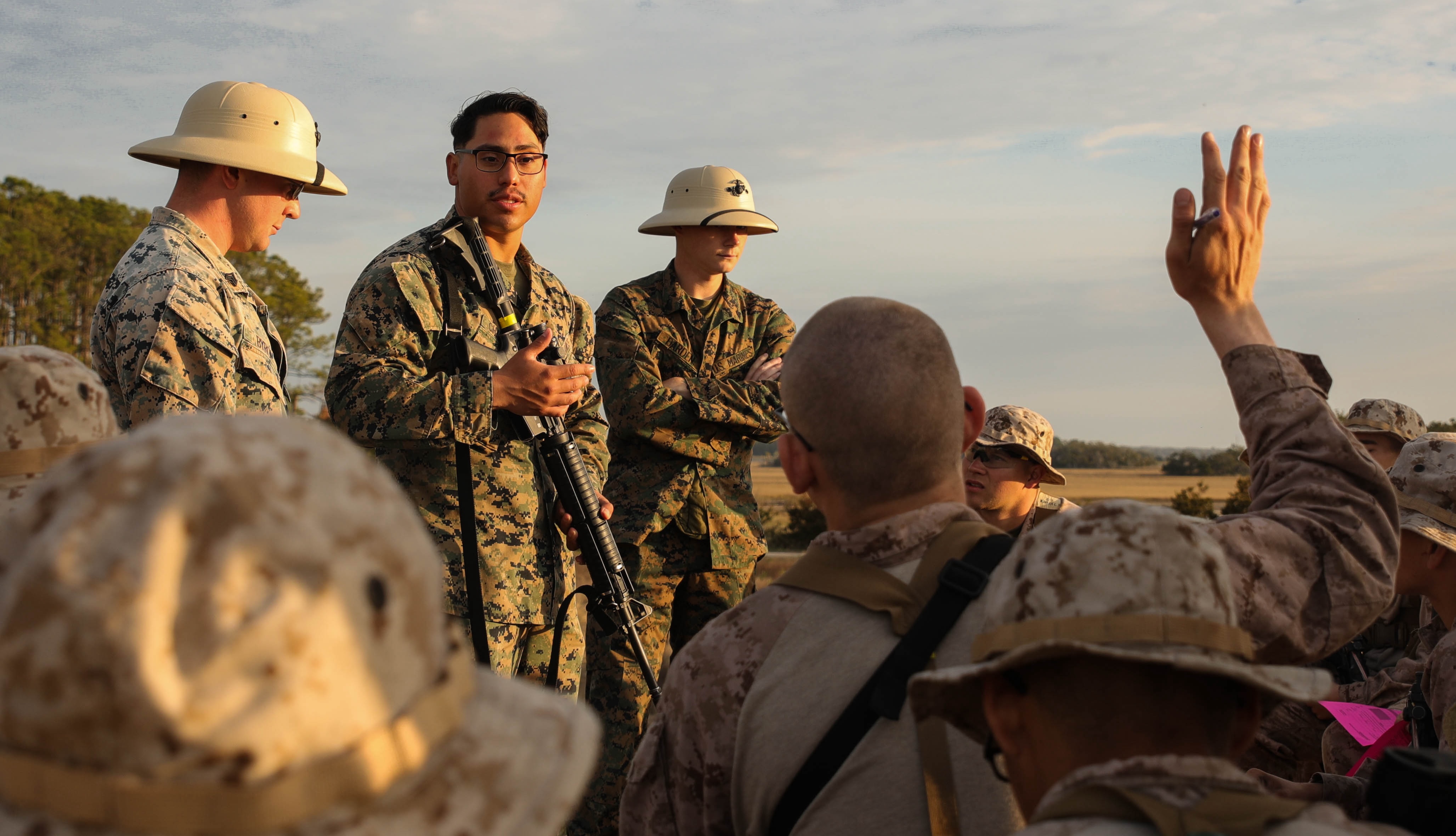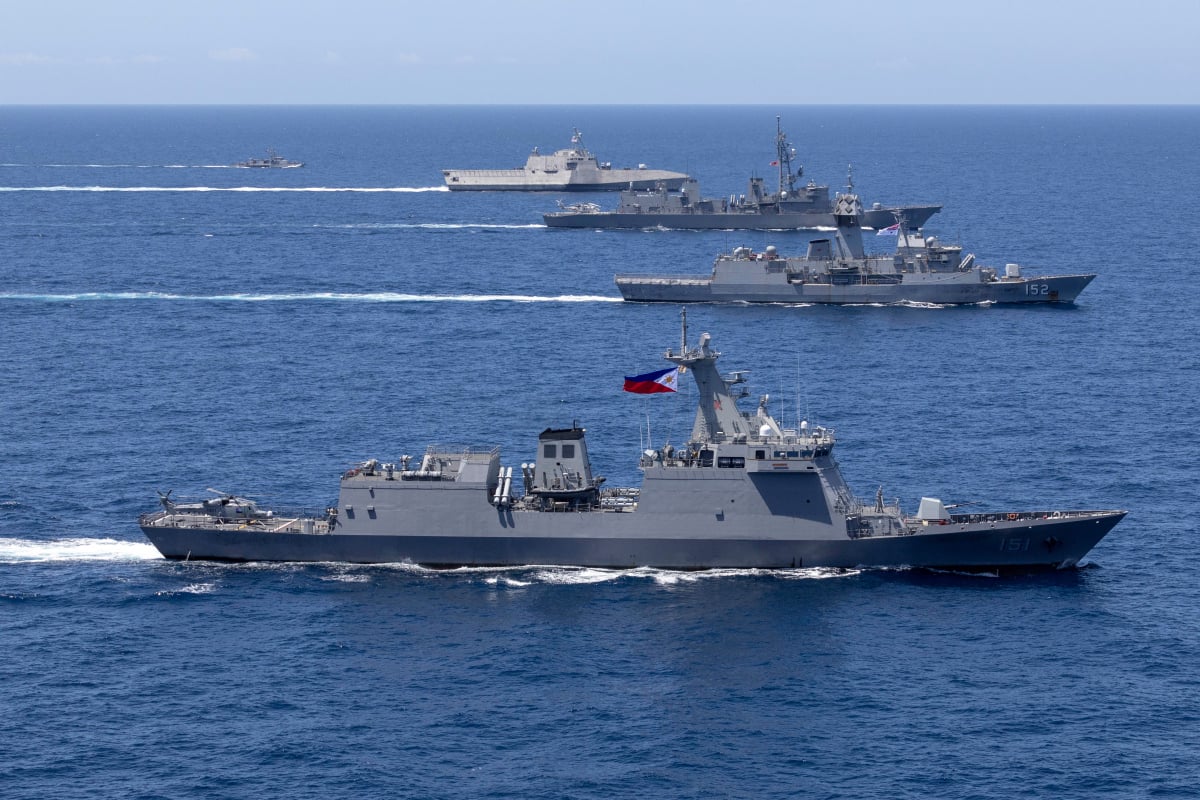
In a future island fight against a tech-equipped enemy, battlefield wins may hinge on a key skill: Rounds on target. For Marines, that means one shot, one kill.
But Marines’ shooting accuracy haven’t quite measured up to that mantra, as service officials have noted from marksmanship studies dating back to 2018.
The Marine Corps wants that to change. Amid ongoing evaluations, experimentation and, in 2022, adjustments to a combat-oriented shooting style, the service again is revising its rifle marksmanship training and qualifying regulations – effective immediately – with more realistic shooting drills, movements and positions. It also is shifting to “a lethality-based target” that only credits the shot if it hits the heart, lung, or brain, said Col. Greg Jones, commander of the Weapons Training Battalion at Quantico Marine Corps Base, Va., noting that “our job in the Marine Corps is to kill the enemies of this great nation.”
“After 20 years of war, we needed to take a harder look at marksmanship lethality,” Jones said.
A “Lethality Assessment” released in 2018 raised four problem areas, Jones said last week in a media roundtable, an audio copy which Training and Education Command provided to USNI News. “Marines don’t do a very good job of shooting while moving, shooting at moving targets, and shooting at unknown distance” and the service “didn’t really record sufficient-enough data to be able to accurately analyze” marksmanship skills, he said.
A big change is that every Marine will have to pre-qualify on the rifle and must attain an Expert score. “Marines must fire an expert classification to accept their Annual Rifle Qualification (ARQ) pre-qualification score,” the service announced Monday in Marine administrative message 123/24. While many Marines wear the Expert badge, not all do, and some units saw fewer attain top badges after the most recent changes in 2022.
Lethality is at the heart of the Training and Education Command’s redesigned rifle marksmanship training, and key changes aim to bolster a Marine’s shooting skills, standardize training programs and practices and, ultimately, ensure Marines deployed into a conflict zone are expert shooters. Changes will be incorporated into an update to Marine Corps Order 3574.2M, last revised in April 2022.
A Marine’s shooting skill is fundamental to what makes a Marine deadly, akin to a surface combatant crew sinking an enemy ship or fighter jet pilot downing an adversarial aircraft. Combat lethality is top on the minds of military leaders who predict the next major war or conflict will see small units deployed across stretches of contested islands and waterways – and battles may involve close-in, intimate fighting where the goal is to kill enemy targets.
To help build more individual lethality, the Marine Corps is using data analytics and data collection that training officials believe will help commanders improve training and accuracy and sharpen Marines into expert shooters. The service is working with the Office of Naval Research and Naval Health Research Center to develop the Joint Marksmanship Assessment Program, or JMAP, which will collect live-fire data as Marines fire rounds on the range. That includes “micro data” such as how quickly they reload or recover to strike another target “down to the second,” Jones said.
Pre-qualification is the required step before the Marine shoots for their qualification level – Marksman, Sharpshooter or Expert, at the highest – on their issued rifle. The service implemented annual rifle requalification, or ARQ, several years ago that allows a Marine who pre-qualified at any level to accept that qualification, meeting the annual training requirement. The problem, though, officials say, was too many Marines didn’t try to improve their scores beyond Marksman or Sharpshooter.
“We don’t want you to accept less than your best effort, so to speak,” said CWO4 Josh Grayek, a Marine Gunner and director of the battalion’s Marksmanship Program Management Section. “We want you to try to get better. So we are only letting you accept your prequal score now if you shoot Expert.”
This new requirement follows on related changes implemented last September “that gives Marines multiple chances in the fiscal year to shoot to improve their scores,” Grayek said.
More changes ahead

A new Marksmanship Campaign Plan recently signed by TECOM Commander Lt. Gen. Kevin Iiams will “focus and formalize the modernization of marksmanship training through deliberate design, iteration, testing, and validation,” the service said in the Maradmin message. Fiscal Year 2024 “testing and evaluation priorities under the MCP are: improving the training continuum from entry-level to the operating forces; and improving the training blocks for the Combat Pistol Program to increase pistol lethality and qualifications.”
WTB Quantico has been working with Weapons Field Training Battalion at Marine Corps Recruit Depot Parris Island, S.C., School of Infantry-East at Camp Lejeune, N.C.; The Basic School in Quantico, Va., and School of Infantry-West at Camp Pendleton, Calif., “to evaluate the training continuum advancements between entry-level to the operating forces,” the message states.
By April, Weapons Training Battalion will develop changes to the Combat Pistol Program and evaluate pistol training instruction ahead of the next Fiscal Year 2025 Combat Marksmanship Symposium. Potential changes to pistol qualification likely will tighten existing rules that don’t always add up to lethal shots.
Under the existing program, “you get credit for hitting anywhere, as long as it’s on the body,” Grayek said. By analyzing scores and data, “you can qualify with the pistol without placing one lethal shot. It only takes one lethal shot to qualify expert.”
While the 2024 symposium didn’t recommend changing the course of fire, he said, it supported changing pistol targets and making training blocks harder so Marines have easier shot at qualifying – and with more lethal shots, “as opposed to just hitting the target.” Unclear yet is whether or how the scoring system would change, he added.
Tech guides training

The Marine Corps also continues to look to revamp its entry-level training.
The Parris Island recruit depot has been experimenting with an electronic feedback tech and laser training system called Blackbeard MantisX. “Parris Island has found some efficiencies in time” with requal training done in two fewer days, Jones said. Instructors then are using those two days for extra, detailed rifle marksmanship lessons that officials believe will help Marines during rifle marksmanship training at follow-on infantry and combat training courses.
The MantisX system has been used for about a year at SOI-East at Camp Lejeune, which participated in the initial experimentation, and “SOI-West is beginning implementation now,” Grayek said. The Basic School will begin implementing the system for officers in late April.
During Marine Combat Training, where non-infantry Marines get schooled in combat skills and infantry tactics, data collection and analytics from Joint Marksmanship Assessment Program, or JMAP, technology will provide immediate, individual feedback, something officials expect will help them qualify at higher scores and become better, more lethal shooters. When they get to their initial annual requalification – the existing ARQ, a three-day event implemented first in 2021 – “we’ll see scores that are at or above fleet average for lethality,” said Jones.
For Marines’ annual requalification at entry-level training Marine Combat Training Battalions and The Basic School, the Rifle Marksmanship Assessment (RMA) replaces Tables 3, 4, 5 and 6 that cover firing at unknown distance and close-in range. It won’t apply yet to Fleet Marine Forces.
The RMA is a series of shooting drills “that quantifies their performance in close-bay and long-bay,” Grayek said. “It’s just scored significantly better, and we’re able to quantify more data points to diagnose where marksmanship needs to improve down the road.”
Scoring will change, too, using the JMAP system, adopting similar practices in the competitive shooting world.
“I can quantify – and it goes into your performance – not just your accuracy, which is what most legacy marksmanship-only evaluation criteria was, was where the bullet landed on the target,” Grayek said. “But now, we’re quantifying how quick your first shot was, like how fast you can present to the target, how fast you can reload and then present again for your follow-up shots. We’re scoring transitions – how fast you can switch from Target 1 to Target 2 and get hits in the lethal zone. So all of that works together to produce your ‘hit factor’ and the data outputs.”
That data will enable the Marine Corps “to diagnose the individual, the squad, the platoon, all the way up to the Marine Corps as a whole and we can figure out where we need to make improvements in subsequent years in shooting packages,” he said.
Those changes will give feedback to Marines that hadn’t been offered or was very limited, Jones said. With the new assessment, “every round is measured and individuals are given feedback on every single round, in every action.” Now every drill – from how one holds the rifle to how they reload or stand – are analyzed and assessed, he said.
Officials also want to apply the Infantry Marksmanship Training program – it’s the baseline, 10-day marksmanship package that’s geared to infantry units – to all Marines, with implementation at both MCT courses, Jones said.
“We’re trying to figure out how to optimize the RMA between the two coasts and TBS,” he said.
An “RMA optimization” plan will determine how to fit aspects of that baseline training to non-infantry training that “would eventually go out to the FMF as a replacement” for the combat marksmanship program tables, he said.
Changes to the marksmanship programs, which stem from pilot tests at recruit training at Parris Island and The Basic School, are part of what will be a modernized marksmanship continuum and will eventually apply across the Marine Corps and comes as the service continues to test and evaluate marksmanship training, to include pistol lethality. Changes to Tables 3 through 6 ultimately will apply to Fleet Marine Force units once upgrades are made to support the RMA, and that depends, in part, to funding and JMAP fielding. Until then, officials said, operational units will continue the existing course of fire for Tables 3 through 6. The goal is “hopefully by next year,” Grayek said.
Jones said that with investments for better training systems with feedback technology so far, “we’ve seen massive improvements in training. So folks shouldn’t be worried about failing. They should be focused… so when they do go downrange, they’re better able to defend themselves and their peers.”
Meanwhile, the marksmanship program continues to collect information and data through virtual symposiums and site visits to evaluate the proofs of concept ahead of decisions at the next symposium. The latest changes follow on the fiscal 2024 Combat Marksmanship Symposium, held in October at Quantico, and revisions issued last fall. The symposium works similarly to an operational advisory group for all marksmanship issues.





